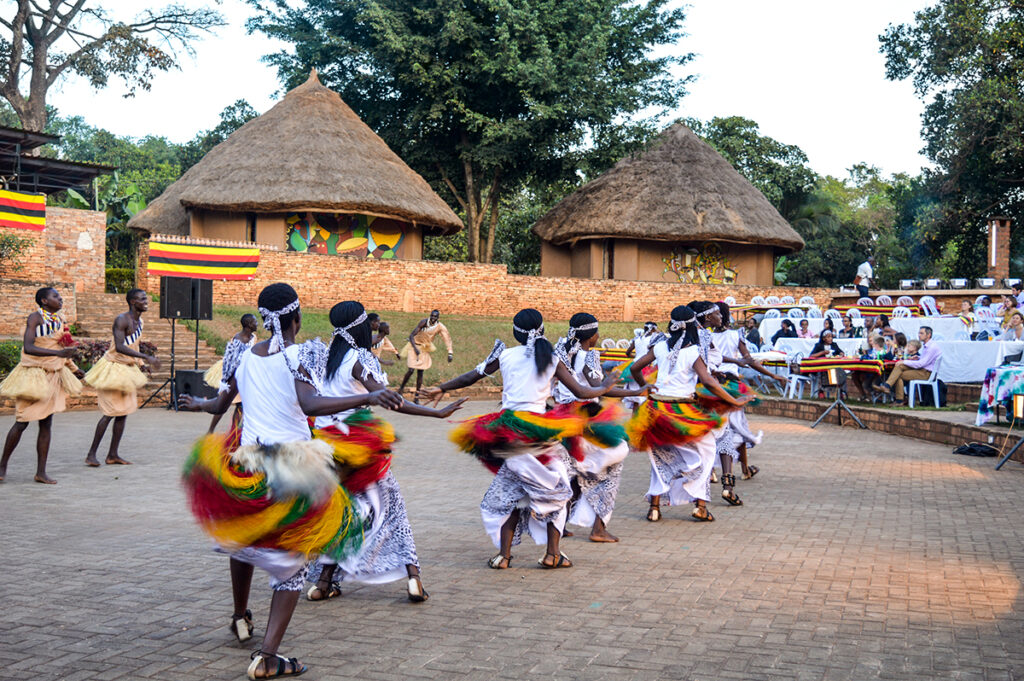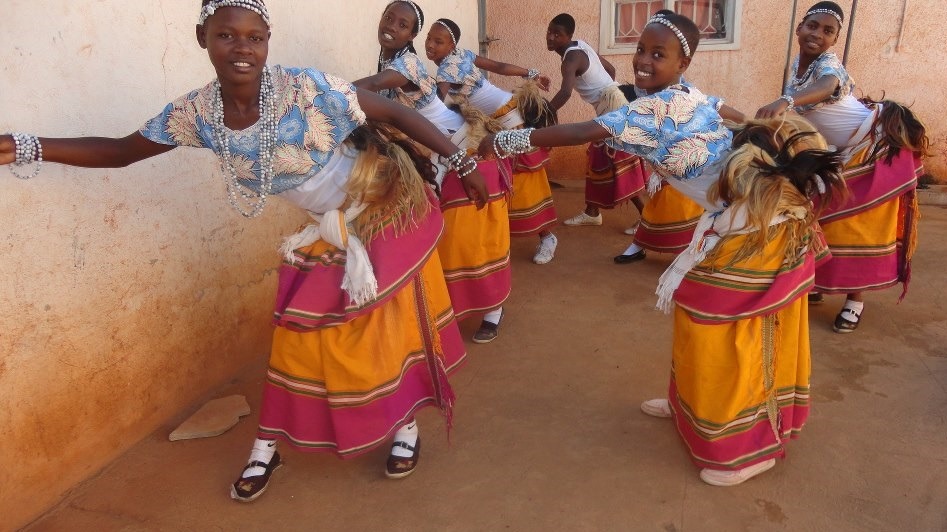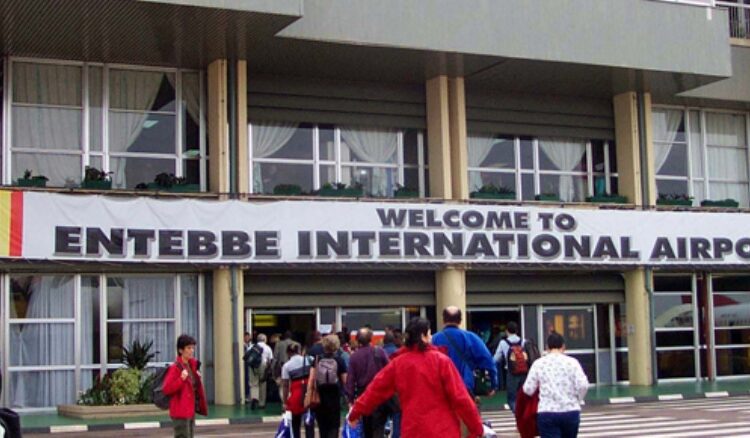
Attending Local Church Services in Uganda | Experiya Tour Company
October 29, 2025
Exploring Boda Boda Culture in Uganda | Experiya Tour Company
October 29, 2025What Music and Dance Are Popular in Uganda?
Uganda, the Pearl of Africa, is not only celebrated for its rolling hills, wildlife, and friendly people but also for its vibrant music and dance traditions that pulse through every corner of the country. Music in Uganda is more than entertainment — it is a form of storytelling, celebration, and cultural expression that connects generations and communities. From traditional tribal rhythms performed with drums and flutes to modern beats blending Afrobeat, reggae, and gospel, Uganda’s music scene captures the spirit of its people — colorful, passionate, and full of life.
Whether you are in a bustling Kampala nightclub or a quiet rural village, music and dance are ever-present. They accompany weddings, festivals, religious gatherings, and even daily chores. To truly experience Uganda is to feel its rhythm — a rhythm that speaks of history, identity, and joy.
Let’s explore the rich and diverse world of Ugandan music and dance — from ancient tribal performances to the modern sounds shaping East Africa’s creative landscape today.
Traditional Ugandan Music: The Rhythm of the Land
Uganda’s traditional music reflects the diversity of its people. With over 50 ethnic groups, each region has its own musical instruments, songs, and dances that tell stories about love, community, harvests, and spirituality. Traditional music was passed down orally, serving as a means to preserve history and teach moral values.
In the past, every major event in a community — from the birth of a child to the crowning of a king — was accompanied by song and dance. Drums, flutes, xylophones, and string instruments were used to create rhythms that reflected emotion and ceremony.
Here are some of the most iconic forms of traditional music and instruments across Uganda’s regions:
1. The Baganda and the Kadongo Kamu Tradition
The Baganda, who make up Uganda’s largest ethnic group, have a rich musical heritage deeply tied to their kingdom’s traditions. The Buganda royal court historically employed musicians who performed for the Kabaka (King) using unique instruments such as the entenga (a set of tuned drums), endingidi (a one-string fiddle), and ennanga (a harp).
Among the Baganda, Kadongo Kamu emerged as a distinctive genre meaning “one little guitar.” It combines storytelling with acoustic rhythm, often narrating everyday struggles, social issues, and moral lessons. Artists like Herman Basudde and Paolo Kafeero became household names for their poetic lyrics and witty social commentary. Even today, Kadongo Kamu continues to be loved for its honesty and traditional sound.
2. The Banyankole and Bakiga – Western Rhythms
In southwestern Uganda, the Banyankole and Bakiga are known for their energetic music and dances that often accompany community gatherings and ceremonies. Instruments such as the endongo (bow harp), ekihere (flute), and entongooli (lyre) create melodic tones that accompany call-and-response singing.
The Bakiga are especially famous for their Ekizino dance — a vigorous, high-stepping group performance that expresses unity and joy. The dance, traditionally performed during harvest celebrations, is accompanied by drums and cheers, drawing everyone into the festive rhythm.
3. The Basoga and Busoga Drumming Tradition
In eastern Uganda, the Basoga people are renowned for their dynamic drumming culture. The engoma (drum) takes center stage, accompanied by the endere (flute) and amahembe (horns). Busoga music is rhythmic and communal, often performed during weddings and coronation ceremonies.
One of the most recognizable dances from this region is the Nalufuka dance, performed with swift hip movements and synchronized steps that mirror the energy of the drummers.
4. The Acholi and Luo Music of Northern Uganda
In the north, the Acholi people have one of the most expressive musical traditions in the country. Their songs are accompanied by instruments like the adungu (arched harp), bul (drum), and calabash shakers.
The Larakaraka dance is a well-known courtship performance traditionally performed by young men and women. With dancers dressed in vibrant attire, the Larakaraka is both a social and romantic expression, filled with graceful footwork and rhythmic drumming.
Northern Uganda’s music often carries deep emotional tones — reflecting themes of love, resilience, and community rebuilding after years of conflict.
5. The Bagisu and the Imbalu Ceremonial Music
In eastern Uganda, the Bagisu people (also known as the Bamasaba) are famous for the Imbalu — a traditional male circumcision ceremony that marks the passage into manhood. Music and dance play a central role in this ritual, with drumming and singing guiding the processions through villages.
The Kadodi dance, performed during Imbalu, is one of the most thrilling traditional dances in Uganda. It features intense drumming and rapid movements, with participants often dancing in circles, celebrating bravery and community pride.
6. The Karamojong – The Nomadic Sound of the Northeast
In the arid plains of northeastern Uganda, the Karamojong people use music as a way to communicate and celebrate pastoral life. Their songs, often performed in unison, feature deep chants and rhythmic clapping rather than instruments.
The Edonja dance, performed during social gatherings, involves rhythmic stomping and chanting that symbolize strength and unity among the warriors and herders.

Instruments That Define Uganda’s Traditional Sound
Uganda’s traditional instruments are masterpieces of craftsmanship and creativity. Each carries its own unique sound and symbolism:
- Engoma (Drums): The soul of Ugandan music. Used in ceremonies, storytelling, and royal functions.
- Adungu: A stringed harp common in northern Uganda, producing gentle, melodic tones.
- Endingidi: A one-string fiddle producing soulful melodies in central Uganda.
- Ennanga: A traditional harp used by Baganda musicians.
- Akogo: A thumb piano (also known as lamellophone), popular in eastern Uganda.
- Endere: A bamboo flute producing soft, haunting notes.
These instruments, often made from natural materials like animal skins, gourds, and wood, showcase Uganda’s deep connection to nature and artistry.
Modern Ugandan Music: Where Tradition Meets the Beat
While traditional music remains integral to cultural life, modern Ugandan music has evolved into a dynamic fusion of African rhythms, global influences, and local innovation. The country’s contemporary music scene is one of the most exciting in East Africa, blending genres such as Afrobeat, reggae, hip-hop, gospel, and dancehall.
1. Afrobeat and Pop
Uganda’s modern sound is dominated by Afrobeat and pop artists who combine traditional rhythms with electronic beats. Stars like Eddy Kenzo, Bebe Cool, Sheebah Karungi, and Azawi have gained international recognition for their catchy hits and energetic performances.
Eddy Kenzo’s song “Sitya Loss” went viral globally, featuring Ugandan children dancing with pure joy — a perfect reflection of the country’s musical spirit.
2. Dancehall and Reggae
Reggae and dancehall have strong roots in Uganda, influenced by the Caribbean but given a distinct East African twist. Artists like Jose Chameleone, Bobi Wine, and Pallaso have created powerful songs blending danceable rhythms with messages about love, unity, and social justice.
3. Gospel Music
Gospel music is hugely popular in Uganda, bridging the sacred and the celebratory. From soulful church choirs to modern gospel artists like Judith Babirye and Levixone, gospel music is both spiritual and uplifting, often performed in both English and local languages.
4. Cultural Fusions and Traditional Revival
A new wave of Ugandan musicians is reviving traditional sounds and blending them with contemporary styles. Groups like Janzi Band, Qwela Band, and Afrigo Band mix African instruments with jazz, funk, and acoustic melodies. These performances often attract both locals and travelers seeking authentic Ugandan soundscapes.
Dance: The Pulse of Ugandan Life
In Uganda, music and dance are inseparable. Every region has its own unique dances that express community pride, celebration, and identity. Dances are performed at weddings, harvest festivals, political rallies, and cultural showcases.
Here are some of the most popular dances you might encounter:
- Bakisimba (Buganda): A graceful dance performed by the Baganda people, originally created to honor the king. It involves elegant waist and shoulder movements, accompanied by royal drums and flutes.
- Ekizino (Kigezi Region): A high-energy dance characterized by jumping and rhythmic stamping, expressing unity and happiness.
- Larakaraka (Acholi): A romantic courtship dance with structured movements and joyful singing.
- Kadodi (Bagisu): The fast-paced ceremonial dance performed during the Imbalu initiation, filled with intensity and rhythm.
- Runyege-Ntogoro (Tooro and Banyoro): A dance symbolizing courtship, where young men and women show their strength and grace through precise movements.
Watching these dances — or even joining in — gives travelers a chance to feel Uganda’s energy firsthand. Dancers move with incredible coordination, guided by centuries of rhythm embedded in the nation’s DNA.
Where Travelers Can Experience Ugandan Music and Dance
Uganda offers countless opportunities to enjoy live music and dance, both traditional and modern.
- Ndere Cultural Centre (Kampala): A must-visit for cultural enthusiasts. The center hosts weekly performances featuring traditional music and dances from across Uganda, along with storytelling and dining.
- National Theatre (Kampala): Home to plays, concerts, and cultural shows highlighting Ugandan creativity.
- Local Festivals: Events like the Bayimba International Festival, Roast and Rhyme, and Nyege Nyege Festival showcase Uganda’s musical diversity.
- Village Experiences: Many rural communities perform traditional music for visitors, often inviting guests to dance and share in the joy.
Why You Should Travel With Experiya Tour Company
To truly experience the rhythm of Uganda, travel with Experiya Tour Company — your gateway to authentic cultural encounters. Experiya specializes in immersive tours that connect travelers with the people, traditions, and art that define Uganda’s soul.
Their cultural itineraries include visits to traditional music and dance performances, opportunities to learn drumming and dancing from local artists, and attendance at live music events in Kampala or rural communities. Whether you want to witness the regal Bakisimba dance, join villagers in a Kadodi celebration, or enjoy modern Afrobeat performances under the African sky, Experiya ensures an unforgettable experience.
With Experiya Tour Company, you won’t just listen to Uganda’s music — you’ll feel its heartbeat, dance to its rhythm, and connect with its people in the most joyous way possible.
Book your Ugandan adventure with Experiya Tour Company today and discover the sounds and movements that make Uganda one of the most musically alive nations in Africa.




